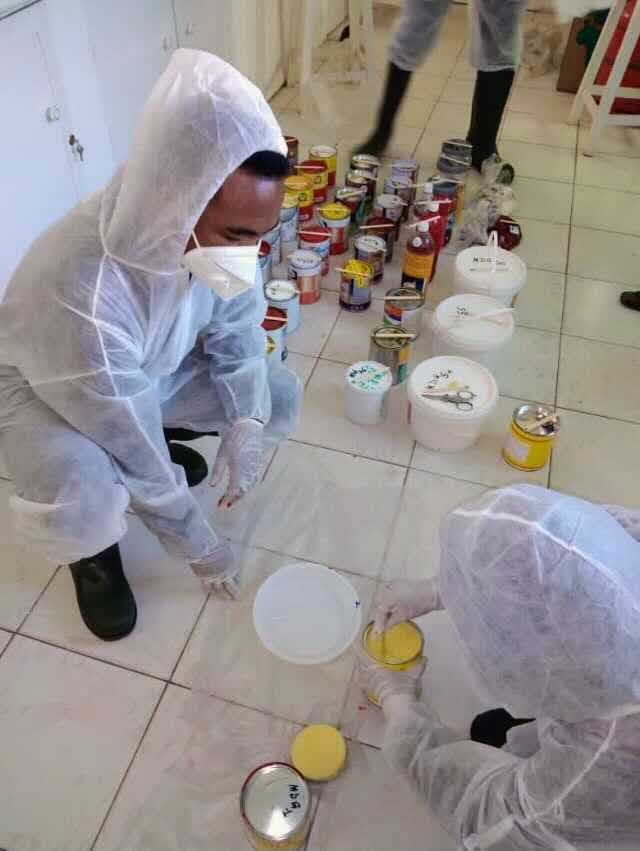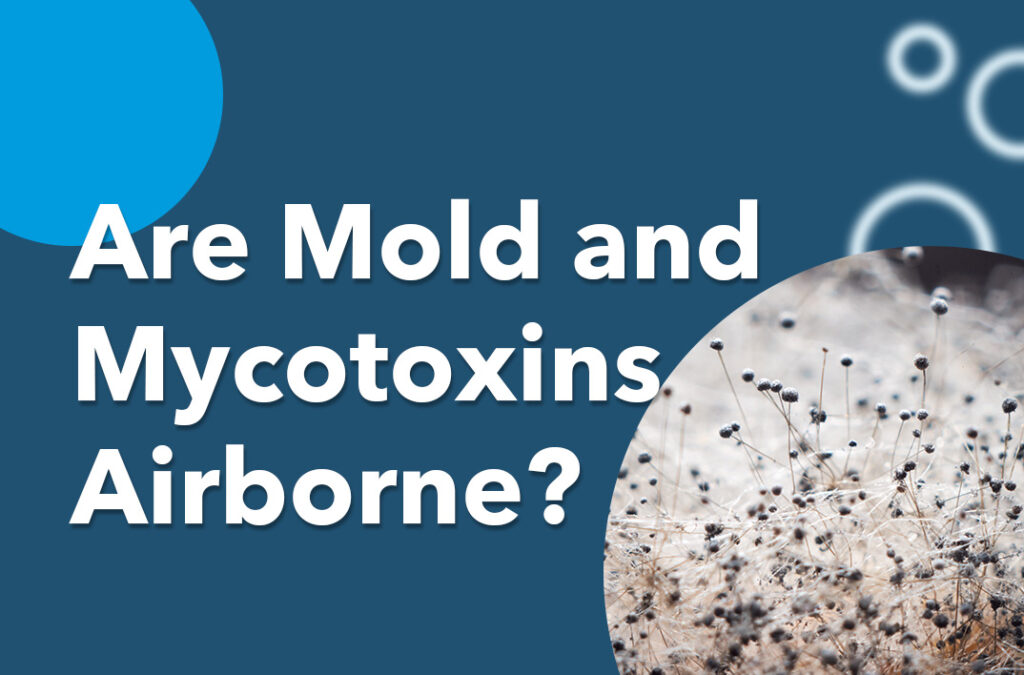Comprehensive Solutions for Your Mycotoxin testing Services Demands
Comprehensive Solutions for Your Mycotoxin testing Services Demands
Blog Article
Exactly How Mycotoxin Testing Aids Stop Contamination and Guard Food Supplies

Mycotoxin screening is an important practice in the food market, offering as a frontline defense against contamination by unsafe toxins produced by molds. Through the application of sophisticated methods like High-Performance Fluid Chromatography (HPLC) and Liquid Chromatography-Mass Spectrometry (LC-MS), food producers can accurately detect and quantify mycotoxin degrees in farming items. This aggressive technique not only guarantees conformity with rigid safety and security regulations however additionally mitigates wellness risks to customers. Normal testing strengthens brand name reputation and monetary health and wellness by decreasing contamination-related incidents. Just how specifically do these testing protocols incorporate right into the more comprehensive food security strategy?
Understanding Mycotoxins
Recognizing mycotoxins begins with acknowledging that they are poisonous secondary metabolites created by specific molds, which can contaminate farming products. These metabolites are not essential for the growth or reproduction of the fungi yet can have severe effects for animal and human health. Mycotoxins are frequently found in staple plants such as corn, wheat, barley, and nuts, where they can proliferate under particular conditions of moisture and temperature level.
There are a number of types of mycotoxins, each created by different fungal species. Fusarium varieties generate fumonisins and trichothecenes, both of which are associated with numerous intense and chronic health concerns.

Risks of Mycotoxin Contamination
The dangers of mycotoxin contamination are complex, positioning considerable hazards to both food safety and security and public health and wellness. Mycotoxins, hazardous substances produced by certain types of fungi, can contaminate a vast variety of farming items including cereals, nuts, flavors, dried out fruits, and coffee.
Financial impacts are another major worry. Contaminated plants can cause significant economic losses for farmers and food producers due to reduced yields and the requirement for expensive purification actions. Moreover, global trade can be significantly prevented as nations impose rigorous mycotoxin regulations to safeguard their populaces, bring about denied shipments and stretched profession relationships.
Environmental aspects such as climate adjustment aggravate the danger of mycotoxin contamination. Variants in temperature level and moisture can create positive problems for fungal growth, boosting the probability of contamination occasions. Thus, understanding and mitigating these risks are critical for guaranteeing the safety and security and integrity of global food supplies.
Approaches of Mycotoxin Evaluating
Properly recognizing mycotoxin contamination in agricultural products is important for guarding public health and wellness and preserving food safety requirements. Various techniques are employed to spot and evaluate mycotoxins, each offering details advantages and constraints.
High-Performance Liquid Chromatography (HPLC) is a widely utilized method because of its high sensitivity and accuracy. It includes dividing mycotoxins from various other substances in an example, enabling accurate quantification. Similarly, Fluid Chromatography-Mass Spectrometry (LC-MS) integrates fluid chromatography with mass spectrometry to supply detailed molecular info, making it specifically valuable for recognizing numerous mycotoxins simultaneously - Mycotoxin testing Services.

Gas Chromatography-Mass Spectrometry (GC-MS) and Thin-Layer Chromatography (TLC) are also employed, each with special applications. GC-MS is efficient for volatile mycotoxins, while tender loving care provides a simpler, affordable option for preliminary testing.
Benefits of Regular Checking
Normal testing for mycotoxins in farming items supplies countless benefits, dramatically adding to public health and wellness and food safety and security. By recognizing contamination early, regular testing assists prevent the circulation of hazardous foods, thereby reducing the risk of mycotoxin-related illnesses amongst customers. This aggressive strategy not just safeguards human wellness but likewise boosts the general high quality of food products.
Regular screening likewise sustains regulatory conformity. Different countries and regions have actually developed strict limitations for mycotoxin degrees in food and feed. Complying with these limits with routine screening ensures that manufacturers and providers satisfy legal criteria, therefore avoiding charges and trade obstacles. Furthermore, keeping conformity cultivates customer trust fund and brand reputation, which are important for market success.
Additionally, routine mycotoxin testing can result in significant economic benefits. Early discovery of contamination enables timely treatment, lowering possible losses from prevalent contamination. Carrying out normal screening methods can additionally lessen recall prices and associated liabilities, which can be monetarily devastating.
Additionally, routine testing supplies useful information that can educate better agricultural methods and storage space problems. By recognizing patterns of contamination, manufacturers can embrace our website safety nets, thereby lowering future threats and adding to the sustainability of the food supply chain.
Executing Examining Protocols
Carrying out reliable mycotoxin screening protocols is important for guaranteeing the safety and high quality of farming products. Developing a durable screening structure involves numerous essential steps, beginning with the recognition of potential contamination points within the production and supply chain. This consists of pre-harvest, post-harvest, storage, and circulation stages. Each stage has to be inspected to pinpoint where mycotoxin contamination is most likely to happen.
When important control factors are recognized, picking suitable testing techniques is important. Common methods consist of enzyme-linked immunosorbent assay (ELISA), high-performance fluid chromatography (HPLC), and mass spectrometry (MS) Each technique has try this out its staminas and weak points; hence, choosing the correct one depends upon the specific mycotoxin being tested, the needed sensitivity, and readily available sources.

Lastly, incorporating the screening protocols right into a comprehensive food safety and security management system is suggested. This enhances traceability and makes it possible for speedy corrective activities when contamination is found, therefore securing the stability of the food supply chain.
Verdict
Mycotoxin screening is vital in stopping contamination and protecting food products by making it possible for very early discovery of harmful contaminants produced by molds in farming items. Advanced techniques such as HPLC and LC-MS ensure conformity with security guidelines and secure customers from wellness risks. Regular testing improves brand reputation, economic security, and count on food safety and security by minimizing contamination-related losses and keeping high requirements in food manufacturing. Implementing strenuous testing protocols is hence critical for the sector's overall health.
Mycotoxin screening is a crucial method in the food sector, offering as a frontline defense versus contamination by harmful toxins generated by molds. An integrated approach entailing farming methods, storage management, and normal screening can mitigate the risks connected with mycotoxin contamination, making certain food safety and security and public health and wellness.
The dangers of mycotoxin contamination are diverse, posturing significant dangers to both food security and public health and wellness.Normal screening for mycotoxins in farming products offers many benefits, substantially adding to public health and wellness and food safety and security.Mycotoxin testing is crucial in protecting against their website contamination and safeguarding food supplies by enabling very early detection of dangerous toxic substances produced by molds in farming items.
Report this page